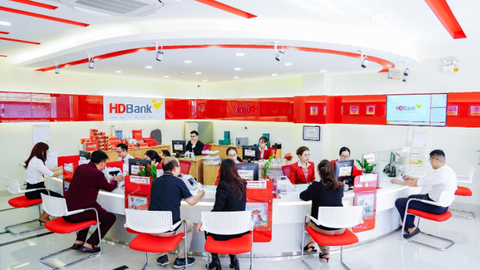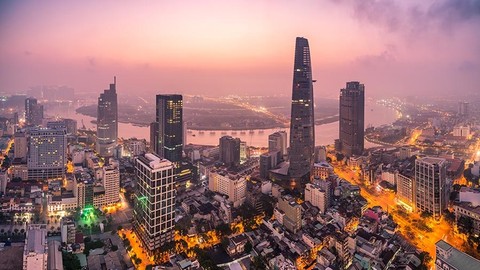
As the Vietnamese economy continues to recover from the effects of the pandemic and income levels of consumers rise, many MGR players are capitalising on the growing formalisation of the grocery sector and increased food spending by launching expansion initiatives.
Rising rates of urbanisation, the expansion of the middle class and high rates of mobile internet adoption also contributed to the rise of delivery services in urban centres like Hanoi and Ho Chi Minh City, where time-poor consumers have the disposable income to pay a premium for home-delivery options. We spotlight the growing healthification trend in the country, particularly among the growing middle to high income (household disposable incomes of above USD10,000) earners, as these households trade up price points for premium and healthier food options.
Retailers Expand As Grocery Spending Rises
Mass grocery retail (MGR) spending will experience strong growth over the medium term (2022-2026) in Vietnam. As with most emerging economies, food and non-alcoholic drinks spending still take up the largest slice of household spending categories in Vietnam at 21.2% of total household spending in 2022. This percentage is expected to stay the same up to 2026, but spending on food and non-alcoholic will still grow strongly, averaging growth of 10.7% a year, over the next five years, from VND1,025trn (USD44.2bn) in 2022 to VND1,557trn (USD63.8bn) by 2026.
Many players are responding to this strong growth with expansion plans in order to better cater to this growing demand. In August 2022, South Korea-based Emart announced that they would be opening two more hypermarkets in Ho Chi Minh City as part of a wider expansion initiative to launch 20 hypermarkets in the country by 2026. The company also plans to pick up on the growing trend of e-groceries and ultra-fast delivery by promising to debut an automated pick-up system as well as one-hour delivery to customers within a five-km radius. Domestic grocery retailing giant WinCommerce also announced in July 2022 that they are aiming to boost their WinMart store network by opening another 720 stores by the end of 2022. This would include 700 new WinMart+ convenience stores as well as more than 20 WinMart supermarkets and hypermarkets.
Strong Growth Of Grocery Retail Over Medium Term
Vietnamese households will experience significant disposable income growth over 2022, supporting greater consumer spending growth across categories. In 2022, average household disposable incomes will grow 9.7% y-o-y, to reach VND130.1mn (USD5,605). Over the medium term (2022-2026), the average disposable income for Vietnamese households is forecast to grow by an average of 9.3% a year, to reach VND184.9mn (USD7,572) in 2026. Vietnam is not spared from the global inflation spike in 2022 and although consumer price inflation will increase in 2022, averaging 3.7% over the year (compared to the annual average of 2.6% over 2015-2019), it will remain significantly below the rate of disposable income growth of 9.7% y-o-y. This will remain the case in 2023, with the trend of household disposable income outpacing inflation maintained throughout our forecast period to 2026. This means consumers in Vietnam will see their disposable incomes increasing in real terms. We believe that real growth in income levels of consumers compliments the retail formalisation trend in Vietnam, as consumers gain more access to modern MGR as their propensity to spend rises.
Positive Real Growth In Disposable Incomes
A country's urban population is another key indicator for e-commerce majors, especially in the early stage of market development, as it offers a centralised target market. In Vietnam, the urban population is expected to see strong growth over the next three decades. By 2030, 44.5% of Vietnamese would be living in urban areas, an increase from 38.8% in 2022. This will give urban centres in Vietnam such as Hanoi, Ho Chi Minh City and Danang an additional 8mn urbanised consumers by 2030. The urban population is expected to rise, creating a wealthier consumer base for companies to target. Urbanised areas are also generally more attractive consumer markets, due to developed logistics, concentrated consumers and higher spending levels. Urban areas will also see greater consolidation of formal modern retail and a gradual erosion of the traditional dominant position of open-air informal markets. Finally, consumers in urban areas will possess the requisite technical skills and hardware, such as smartphones, to access e-commerce platforms, allowing businesses to complement their business offerings by having multiple channels for consumers to access their products.
Rising Urbanisation In Vietnam
The main target market for MGR retailers are urban consumers, in the middle-to high-income households (average annual disposable incomes of more than USD10,000). Traditional open markets have been the standard shopping channel for many Vietnamese consumers. They are popular amongst locals because they offer cheaper prices as compared to the supermarkets and their products are also often perceived to be fresher. Over the years, economic development has encouraged the formalisation of retail in the country, particularly in the urban areas in the country. As consumers' real income rises, the greater propensity for food spending has also created a stronger demand for supermarkets and more formalised locations of grocery retail as consumers seek greater variety in their shopping.
These are generally time-poor consumers, who have the disposable income to pay a premium for easier access to a wider variety of products as well as home deliveries. This is a relatively new consumer market in Vietnam, having developed over the past few years as a result of rapid economic growth feeding through to wage growth, thus creating a sizeable middle class (households with annual disposable incomes above USD10,000).
In 2022, 3.4mn households or 10.7% out of total households had an annual disposable income of more than USD10,000. This number is forecast to grow by a compound annual growth rate of 9.2% out to 2026, whereby there will be 6.8mn households, or 19.9% of total households, that have a disposable income of more than USD10,000 a year. The majority of them will be located in the economic centers, such as Hanoi and Ho Chi Minh City. The wealthier households are mainly located in urban areas, making it easy for MGR companies to target their key target markets.



















